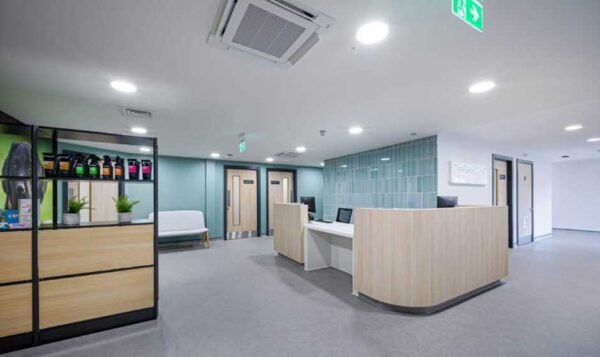Why is insulation good for energy efficiency?

Insulation, such as wall insulation in Austin, is a paramount component of energy-efficient building design, contributing significantly to reduced energy consumption, improved comfort, and lower utility bills. It acts as a barrier that helps control heat flow, maintaining a stable and comfortable indoor environment while minimizing the need for heating and cooling systems. We will explore why insulation is indispensable for energy efficiency, covering topics such as its role in reducing heat transfer, preventing thermal bridging, ensuring airtightness, and promoting sustainability in building practices.
Role of insulation in energy efficiency
1. Reducing Heat Transfer
One of the primary reasons insulation is essential for energy efficiency is its ability to reduce heat transfer between the interior and exterior of a building. Heat naturally moves from warmer areas to cooler areas, seeking equilibrium. During the cold winter, indoor heat escapes through walls, ceilings, and floors to the colder outdoor environment. Conversely, in hot summer months, outdoor heat attempts to infiltrate the cooler indoor spaces.
Insulation acts as a thermal barrier that hinders this heat transfer. It traps heat inside during winters and stems excessive heat from entering during summers. By reducing heat transfer, insulation helps maintain a consistent and comfortable indoor temperature, reducing the dependence on heating and cooling systems.
2. Preventing Thermal Bridging
Thermal bridging occurs when heat is conducted through materials with high thermal conductivity, such as metal studs or concrete slabs, bypassing the insulation. These areas of reduced insulation effectiveness can result in heat loss or gain, ushering energy inefficiency and discomfort for occupants. High-quality insulation materials and proper installation techniques are designed to minimize thermal bridging. Continuous insulation and insulated sheathing help create a thermal barrier that prevents heat from escaping or infiltrating these vulnerable areas. This critical aspect of insulation ensures that the building envelope functions efficiently in all weather conditions.
3. Ensuring Airtightness
Insulation also plays a pivotal role in achieving airtightness within a building. An airtight envelope stems from the uncontrolled exchange of indoor and outdoor air, reducing energy loss caused by drafts and air leakage. Insulation materials, such as spray foam and rigid foam board, can be effective air barriers when correctly installed. Proper sealing and insulation of building joints, gaps, and penetrations are essential for airtightness. An airtight building envelope enhances overall energy efficiency by reducing the need for constant heating or cooling to compensate for air leaks, resulting in lower energy bills and enhanced comfort.
4. Promoting Sustainability in Building Practices
In today’s environmentally conscious world, sustainability is a paramount concern in construction and building design. Insulation materials have evolved to propose sustainable options that not only enhance energy efficiency but also reduce the environmental impact of construction. Eco-friendly insulation materials, such as recycled fiberglass, cellulose, and spray foam with low volatile organic compound (VOC) content, align with sustainable building practices. Moreover, the long service life of insulation contributes to sustainability by reducing the need for replacement and minimizing waste. Sustainable insulation choices, combined with proper installation techniques and efficient building design, are crucial steps toward reducing a building’s carbon footprint.
5. Regulating Indoor Humidity
Insulation also indirectly contributes to energy efficiency by helping regulate indoor humidity levels. Inadequate insulation can lead to condensation on interior surfaces, which can promote mold growth and reduce indoor air quality. Properly installed insulation helps maintain consistent indoor temperatures, reducing the hazard of condensation and linked issues. Additionally, by reducing temperature fluctuations, insulation reduces the strain on HVAC systems. When HVAC systems do not need to work as hard to maintain comfortable temperatures, they consume less energy, resulting in lower energy bills and extended equipment lifespan.
6. Compliance with Building Codes and Standards
Insulation is not just a matter of choice but is often required by building codes and standards. These regulations are in place to ensure energy efficiency, occupant comfort, and safety. Compliance with these codes is paramount when constructing or renovating buildings. Failure to meet insulation requirements can lead to costly retrofits or penalties. Therefore, insulation is not only good for energy efficiency but also a legal and regulatory necessity in many provinces.
7. Enhancing Building Durability
In addition to its energy-saving benefits, solid wall insulation can enhance the durability of a building. Insulation materials can act as a barrier against moisture, stemming it from infiltrating walls and causing structural damage. Moisture can lead to rot, mold growth, and reduced structural integrity, which can be costly to repair. Insulation materials like closed-cell spray foam have a high resistance to moisture, furnishing an added layer of protection for the building envelope. This moisture resistance helps preserve the structure’s integrity over time, contributing to the longevity of the building.
Insulation is an indispensable element of energy-efficient building design. It reduces heat transfer, prevents thermal bridging, ensures airtightness, and promotes sustainability in construction practices. Insulation also plays a role in regulating indoor humidity, enhancing building durability, and ensuring compliance with building codes and standards. For homeowners and building professionals alike, investing in high-quality insulation materials and proper installation is a wise choice that offers numerous benefits, including lower energy bills, increased comfort, reduced environmental impact, and enhanced structural integrity. In an era of increasing energy awareness and environmental responsibility, insulation is a key player in creating sustainable, energy-efficient, and comfortable indoor environments.



